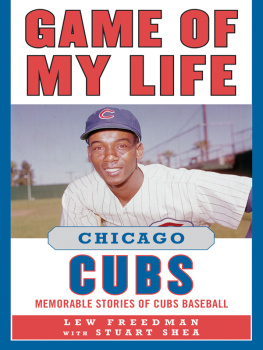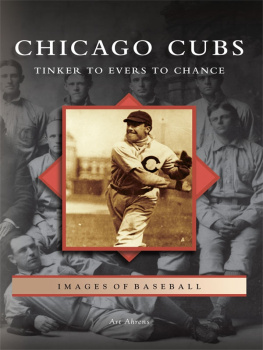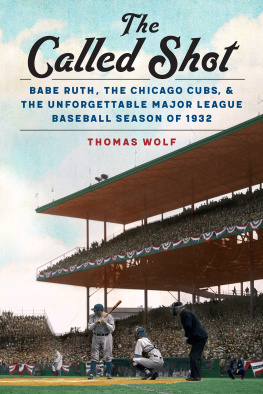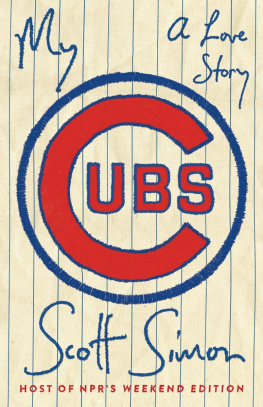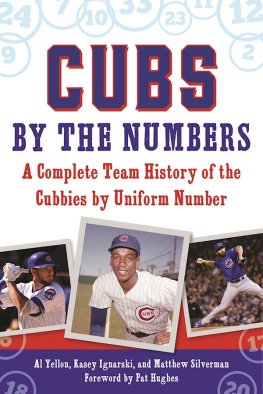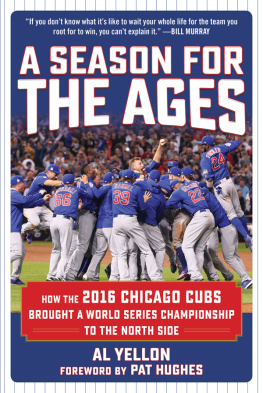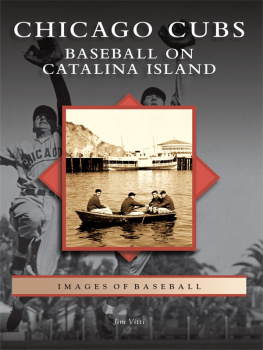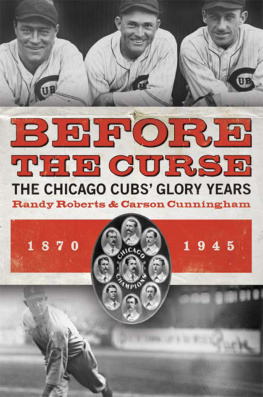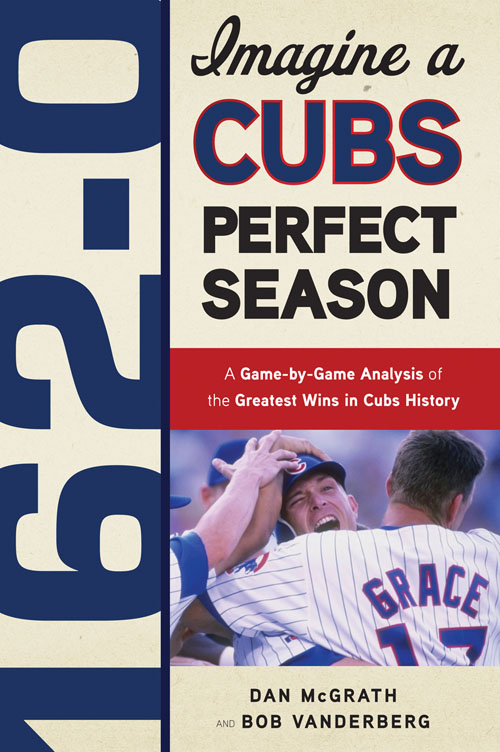
Dedication
To Jo-Anna, Megan, and Matt McGrath. The first team, always. And to Jim McGrath, his familys Mr. Cub. Dan McGrath
To the families and closest friends of the recently departed Ron Santo and Phil Cavarretta, two Cub greats who also received the opportunity to finish their playing careers with the White Sox, whose fans cheered them as if each man had always been one of their own. Bob Vanderberg
Contents
Introduction
The late-90s TV series Chicago Hope was about a quirky, well-meaning, struggling Chicago hospital, not a Chicago National League ballclub, even though the team fits the same description.
The Chicago Cubs have been dealing in hope for more than a centuryas the 2011 season dawned, it had been 102 years since their last World Series championship and 65 years since their last Series appearance. Teams that didnt even exist when the Cubs were losing to Detroit in the 1945 Fall ClassicFloridas Marlins, Torontos Blue Jays, even New Yorks hated Mets, for gosh sakeshave won multiple Series titles since the Cubs last competed for one. Twelve U.S. Presidents have occupied the White House, and man has walked on the moon.
The late, great Chicago columnist Mike Royko, as the defiant embodiment of the term long-suffering Cub fan, once sought to rationalize his frustration with a rather charitable observation: Any team can have a bad century. Too trueand the Cubs are working on a second one.
Yet through decades of failurefrequently hopeless, abject failure, interspersed with the occasional 1969-style near-miss that was even more painful to endureCub fans have been among the most unswervingly loyal and irrepressibly optimistic people in sports. Next year is just around the corner. And its bound to be better.
It rarely is, and yet a Cub fan keeps coming back for more. Its partly the nostalgic charm of Wrigley Field, its partly the old-school allure of day baseball. But its largely because the Cubs, for all their myriad flaws, often present a beguiling, endearing cast of charactersonly a Cub (Jose Cardenal) could miss a game because his eyelid was stuck open.
And only the Cubs could trade a swift, dynamic, Hall of Fame-bound outfielder for a broken-down, used-up pitcher who would win a total of seven games for them. Lou Brock for Ernie Broglio. Forty-four years later, its still enough to make a grown fan cry.
The eight-team National League in which the Cubs prevailed in 1945 has doubled in size, and a quarter of the teams are eligible for two rounds of playoffs that didnt exist when the Cubs last won the pennant. They have been playoff participants six times in those 65 years, but five times they failed to win a series and three times they failed to win a game.
In fact, the losses have far outnumbered the wins in most Cubs seasons. But because of their relative rarity, the victories tend to stand out more, and many of them are as cherished as family heirlooms. Wouldnt it be fun, then, to comb through Cubs history and pick a win that truly stood out on each date of a typical season? Thats the premise of this book162-0: A Perfect Cubs Season. Think about ita perfect Cubs season? Totally fanciful, sure, but lots of fun.
Some of the choices were obvious: 72 years after it took place, Gabby Hartnetts Homer in the Gloamin remains one of the most significant moments in baseball history. Based on eyewitness accounts, a lot more than 5,264 people were in the stands at Wrigley Field on that May day in 1970 when the great Ernie Banks took Pat Jarvis deep for his 500th career home run. Similarly, 15,758 was the paid crowd for Kerry Woods magnificent 20-strikeout game against the Houston Astros in May of 1998, but Wood says he has met at least 25,000 people who claim to have been there.
Before Banks there was Hack Wilson, and after him came Sammy Sosa. Not a similarity among them, save for their crowd-pleasing ability to hit long home runs. Frank Ernaga did it a time or two, and so did Bob Speake and Art Schult and Julio Zuleta.
Ryne Sandberg launched an MVP season and a Hall of Fame career with two game-tying home runs off Hall of Famer Bruce Sutter in June of 1984; mention the Sandberg Game to any Cub fan and he or she knows exactly what you mean, down to the last detail.
Adolfo Phillips had a day like that once. So did Lee Walls, and Hank Sauer, the Mayor of Wrigley Field.
A game-winning grand slam off Don Nottebart 23 years earlier might not have had the same pizzazz as Sandberg connecting off Sutter, but it gave Al Heist a place in Cubs lore. Dick Drott is in there, too, along with Art Ceccarelli, Leo Burke, Moose Moryn and Willie Smith.
The Cubs have been notorious for breaking hearts over the yearstheres no getting around it. But they also have dispensed some thrills, no question. We hope you will enjoy reliving some of them in these pages.
April

Mr. Cub Ernie Banks hit his 300th home run in April 1962. He completed his two-time MVP career with 512 homers.
April 8, 1969
Cubs 7, Phillies 6
The Willie Smith Game Gave Cubs Hope
Its fitting that one of the most memorable seasons in Cubs history would begin with one of the most memorable games.
The Willie Smith Game. Its the only description needed. And in Philadelphia it might be remembered as the Don Money Game if fate hadnt intervened in the person of Smith, a cheerful, amiable pitcher-turned-outfielder who also sang professionally during a fairly obscure baseball career that featured one unforgettable moment.
The 1969 season was the Cubs fourth under firebrand manager Leo Durocher. They had improved in each of the previous three campaigns after ruefully living up to Durochers takeover pronouncement that this is not an eighth-place team by finishing 10 th in 1966.
Even before it started, the 1969 season was historic. Expansion added two teams to each major leagueMontreal and San Diego in the National, Kansas City and Seattle in the Americanand four six-team divisions were created to facilitate scheduling and emphasize geographical rivalries. The schedule remained at 162 games, with the division champions then meeting in two best-of-five playoff series to determine each leagues World Series representative.
The Cubs were assigned to the National League East, one of the toughest divisions with the two-time pennant-winning Cardinals, the hard-hitting Pirates and on-the-rise young clubs in New York and Philadelphia. But the Cubs were a confident team when they took the field for the April 8 season opener against the Phillies, and a standing-room crowd of 40,796 at Wrigley Field shared in that optimism.
Ernie Banks was still Mr. Cub, still a productive, dangerous hitter at 38. All-Stars Billy Williams, 30, and Ron Santo, 29, added more thunder to the middle of an imposing batting order. Young veterans Glenn Beckert and Don Kessinger joined Santo and Banks in the leagues best infield. Randy Hundley was a rock behind the plate and deft handler of a pitching staff that featured Ferguson Jenkins, Ken Holtzman and Bill Hands in a strong rotation.
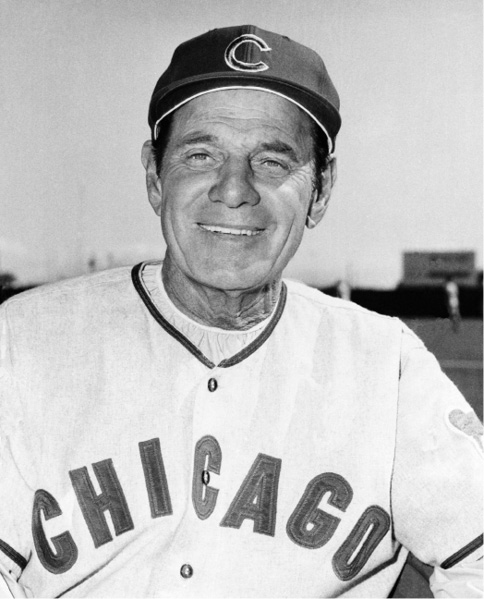
Cubs manager Leo Durochers hunch led to an Opening Day walk-off home run. It was the first taste of the wild summer ahead.


